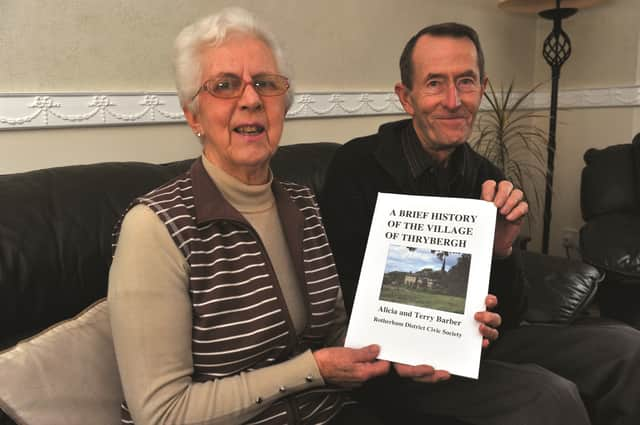Plotting the history of Thrybergh


Terry and Alicia Barber decided the village had enough points of interest to be a case study during their archaeology studies.
But the project - for a part-time University of Sheffield course - grew into a book, which has now been published by Rotherham District Civic Society.
Advertisement
Hide AdAdvertisement
Hide AdFormer steelworker Terry (78) said: “Once that archaeology bug gets you, it has you and you will enjoy it.
“You just can’t help it. It’s had us now for 18 or 20 years and we still love it.
“We picked Thrybergh because we wanted to do something in Rotherham but felt there wasn’t much in the town itself that we could get our teeth into, which hadn’t been done before.
“As a boy, I lived not very far from Thrybergh and knew it had a lot of old places.”
Advertisement
Hide AdAdvertisement
Hide AdThe couple, of Laughton Road, Thurcroft, began with a wander around Thrybergh and came across a cottage from 1695.
Retired RCAT teacher Alicia (74) said: “We chatted to the owners and they were thrilled to bits about what we were doing. They didn’t know much about the history of the house.
“Originally it had been an inn, but now it’s been turned into two semi-detached homes. “It had a bowling green out the back, a cock-fighting pit and, in the front garden, a well.
“It was used by one of the Reresby family when people came to stay, before he gambled everything away and lost the whole estate.”
Advertisement
Hide AdAdvertisement
Hide AdThrybergh existed three or four centuries before the Norman Conquest and was named Triberga - meaning “three hills” in the Domesday Book.
Terry and Alicia’s book provides an overview of the village’s agricultural and industrial past.
It includes diagrams of how St Leonard’s Church developed from 900AD and information on the more modern St Peter’s, built in 1909 after Silverwood Colliery was sunk.
Terry, who has three children and two grandchildren with Alicia, said: “In medieval times, Thrybergh village would have been largely self-supporting, and agricultural surplus being sold in the nearby market towns of Rotherham, Doncaster and Braithwell.
Advertisement
Hide AdAdvertisement
Hide Ad“One of the main sources of information for us was an unpublished piece by Canon Dixon and A.F. Oakley.
“We were thrilled to bits to have the book published by the civic society.”
The book, A Brief History of the Village of Thrybergh, is available from Rotherham Visitor Centre, priced at £10 in colour and £5 black and white.